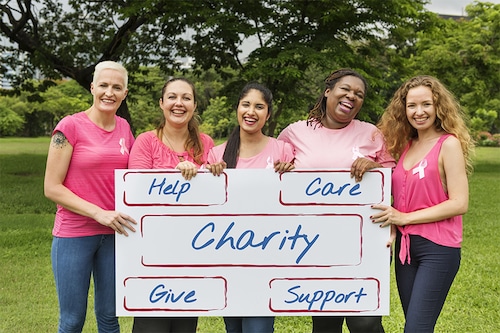Joy of Giving week: Help, Probe and Push
Once you are convinced about the joy of giving, it's time to settle down and take the commitment to the next level
The Joy of Giving week started on October 2, and will go on till October 8. In this daily blog series, we will take you through seven habits of effective givers, one habit at a time, to help develop a culture of giving.
In many ways, Habits 1 to 3 are similar to the dating and courtship period - your initial contributions are like a date, helping you decide if you like spending time with the cause, how the organisation is responding to your support, and allowing you to get a feel of whether you are wanted and can contribute meaningfully to the organisation’s work. You iterate this, hopefully, with three to four different organisations over a period of a year or two, till you find “the right one for you”- the one that values your contribution and where you feel you are adding value.
HABIT 1, HABIT 2 and HABIT 3 to get you started
For some of us, that’s where it ends - we find a good date, the cause you are supporting is a “good friend” and since you can’t really commit a lot more to it, you settle with “friendship” and do what you can do best.
Habit 4 is for those who are willing to take it a notch higher and commit to the organisation and cause, make full use of all the resources identified in Habit 3. Read on, if you think you would be comfortable building a relationship of a lifetime.
Like in most relationships, Habit 4 is where you will decide by the end whether it is “forever”. You start investing, but you also start expecting; you go beyond the superficial and look to find a deeper connection.
The best way to start on this path is to build goodwill. After giving time, money and other resources in a way that the organisation finds useful, strive to become a valuable member such that you are cherished.
How do you start helping? There are two ways in which you could do this
1 Identify the three or four most important problems the organisation or cause are facing by simply asking the leadership. See how you can contribute in these areas - through money, volunteering or bringing in expertise of some kind. For example, if the challenge is fundraising for a specific project or for the overheads of the organisation, make that your focus. Understand the issue, build out the story and start raising funds for it. If the challenge is building information systems and you have expertise in the area or have access to it, get down to helping build the systems.
2 If you find that the current organisational key challenges are in the areas you are not skilled to contribute to, identify something where you can help and convey it to the leadership. This will help build trust. More often than not, you will be able to find an intersection between what you have to offer and what the organisation needs. That becomes your “action space”.
In a rare case that you find no common space, you realise either the organisation doesn’t value the skills and resources you bring to the table or they don’t see the problems you see. At this stage, it’s better to move on to another cause.
Once you identify your area of work, deep dive to make your mark. Talk to the organisation, work out an action plan, jot down responsibilities, and commit to timelines, resources and connections. This may be philanthropy, but you will be expected to be accountable.
Equally, identify the aspects that the organisation/ cause and its members will contribute to. You are now a part of the team. Like individuals, organisations and causes have weaknesses, insecurities, beliefs dogmas and blindspots. Working on them involves handling them with sensitivity, building an open atmosphere of trust, dependability and loyalty.
Non-profit organisations, causes and movements often need the same resources and skills and face the same challenges as businesses. Here are some things you can do:
1 Building talent: Hiring is much tougher for the social sector thanks to limited budgets. Help figure the right people for the job and the cause. You could carry out some marketing strategies to attract the right talent. Help develop a training program and human resources process.
2. Creating systems and processes to track the work on the ground: Build it with dual purposes in mind – diagnostic which would allow the organisation to reflect, learn and improve and accountability, which will allow donors and external stakeholders measure outcomes.
3. Communication, donor and volunteer engagement and fundraising: Volunteers are better equipped to contribute, because you can wear the hat of a donor, an outsider seeking value for his/ her contribution.
4. Financial controls and accounting: Most non-profits struggle with their books of accounts, so expertise in setting up systems can be very useful.
Daan Utsav, the Joy of Giving week begins on October 2, till October 8. Over the next week, we’ll delve into each of these habits and help you with tips and methods to become an effective giver.
The author set up GiveIndia in 2000, to create a "giving culture" in India and, in 2009, he, along with several other volunteers, conceptualised and launched DaanUtsav, a festival that aims to bring India together to celebrate giving.
